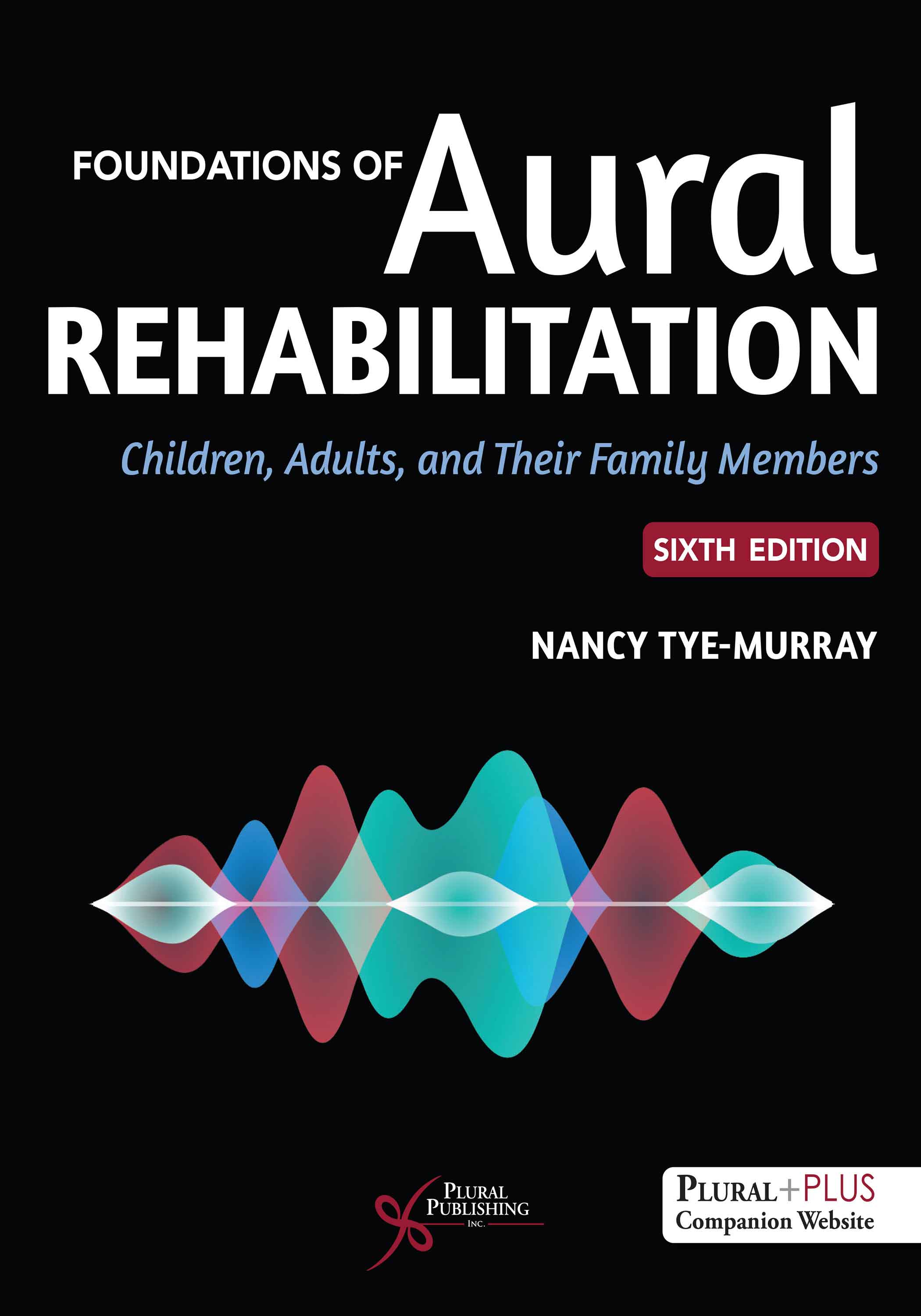
Foundations of Aural Rehabilitation: Children, Adults, and Their Family Members
Sixth Edition
Nancy Tye-Murray
Details: 567 pages, 2-Color, Softcover, 8.5" x 11"
ISBN13: 978-1-63550-420-0
© 2024 | Available
For Instructors
Purchase
Thoroughly updated with three new chapters, Foundations of Aural Rehabilitation: Children, Adults, and Their Family Members, Sixth Edition introduces the fundamentals of audiologic rehabilitation and hearing-related speech-language pathology in an easy-to-read, concise resource for the field of communication sciences and disorders. The text offers creative coverage of theory, clinical practice, and research-based approaches for identifying, diagnosing, and treating hearing-related communication disorders in children and adults. The book includes case studies, and general demographic, medical, and pop-cultural trends are considered in parallel with corresponding developments in aural rehabilitation.
The text is separated into three sections for the most comprehensive coverage of each topic: Part 1 describes the components of an aural rehabilitation plan, Part 2 concerns adults and their family members, and Part 3 concerns children and their parents. Important topics throughout include patient-centered services, counseling, diagnostics, selection and fitting of listening devices, conversational fluency and communication strategies training, auditory training, speechreading, language and speech acquisition, and literacy.
New to the Sixth Edition
- Reorganization of chapters combine shared themes and streamline learning:
- Audiological Examination and Listening Devices chapters have been combined into Chapter 2
-
Assessing Conversational Fluency and Communication chapters are now combined into Chapter 6
- New chapters on:
- Auditory training for children, with detailed guidance for developing training objectives and activities (Chapter 13)
- Language development and language therapy (Chapter 14)
- Speech and literacy acquisition, along with practical examples of lessons (Chapter 15)
- Inclusion or expansion of special topics, including auditory processing disorder, hidden hearing loss, unilateral hearing loss, and cultural competency
-
Improved and expanded number of figures that illustrate and illuminate key concepts and ideas
Key Features
- Focus on evidence-based approaches to aural rehabilitation
- Written in an engaging and clear style
- Chapters begin with Chapter Outlines and end with Key Chapter Points and Terms and Concepts to Remember
- Case studies in each chapter
- Numerous illustrations, tables, sidebars, and text boxes enrich the presentation of concepts
- Bolded key terms throughout with definitions in the margins and a comprehensive glossary make for easy review
- Chapter Key Resources and Appendices provide tools that can be used in clinical practice
PluralPlus Online Ancillary Materials
For Instructors: PowerPoint slides, Test bank, Case-Based Learning Activities, Teaching Tips, and Sample Syllabus
For Students: Study quizzes, Exam Review Sheets, and Flashcards
Instructor test bank available on the Respondus Test Bank Network.
Review
"This book provides a plethora of information relating to aural rehabilitation. The author has taken a multi-faceted approach, combining firm evidence-based perspectives with an evaluation of the scientific foundations of current clinical practices. This book is mainly aimed at those studying audiology and/or speech and language therapy, newly qualified audiologists and professionals linked with audiology such as Teachers of the Deaf. This book can also be used as a refresher for experienced audiologists. . . .
This book acts as a fantastic source to develop an understanding of aural rehabilitation and provides up-to-date research and information in an easy-to-understand manner. I am delighted to recommend this book to students and experienced audiologists to assist in their current clinical practice."
—Feraz Ahmed, Kings Cross Hospital, Dundee, UK, in ENT & Audiology News (July 2023)
Preface
Chapter 1: Introduction
The World Health Organization (WHO) And Hearing-Related Disability
Services Included in the Aural Rehabilitation Plan
Where Does Aural Rehabilitation Occur?
Who Provides Aural Rehabilitation?
Hearing Loss
Service Needs
Culture and Cultural Competence
Evidence-Based Practice
Case Study: Applying the WHO’s International Classification of Functioning, Disability and
Health
Case Study: Evidence-Based Practice Decision Making
Final Remarks
Key Chapter Points
Terms and Concepts to Remember
Appendix 1–1
Appendix 1–2
Appendix 1–3
Part I The Components of an Aural Rehabilitation Plan
Chapter 2: Diagnostics and Listening Devices
Hearing Testing and the Audiogram
Speech Recognition Testing and Speech Audiometry
Listening Devices
Hearing Aids
Teleaudiology
Over-The-Counter Hearing Aids and Personal Sound Amplification Products
Cochlear Implants
Hearing Assistive Technology Systems And Assistive Listening Devices
Case Study: Listen to the Music
Final Remarks
Key Chapter Points
Terms and Concepts to Remember
Key Resources
Chapter 3: Auditory-Only Speech Perception and Auditory Training
Listening to Speech With a Hearing Loss
Goals of Auditory Training and Candidacy
Historical Notes
Brain Plasticity and Auditory Training
Theoretical Underpinnings for Auditory Training
Auditory Training to Improve Speech Recognition
Auditory Training to Improve Music Perception
Benefits of Auditory Training
Case Study: Learning to Hear Again
Final Remarks
Key Chapter Points
Terms and Concepts to Remember
Chapter 4: Audiovisual Speech Perception and Speechreading Training
Speechreading for Communication
Characteristics of a Good Lipreader
What Happens When Someone Lipreads?
The Difficulty of the Lipreading Task
What Happens When Someone Speechreads?
Factors That Affect the Speechreading Process
Assessing Vision-Only and Audiovisual Speech Recognition
Speechreading Training
Benefits of Speechreading Training
Oral Interpreters
Case Study: An Exceptional Lipreader
Final Remarks
Key Chapter Points
Terms and Concepts to Remember
Chapter 5: Communication Strategies and Conversational Styles
Conversation
Facilitative Communication Strategies
Repair Strategies
Stages of Communication Breakdown
Research Related to Repair Strategy Usage and Communication Breakdowns
Conversational Styles and Behaviors
Case Study: A Couple Conversing
Final Remarks
Key Chapter Points
Terms and Concepts to Remember
Chapter 6: Communication Strategies Training and Digital Therapeutics
Conversational Fluency
Self-Efficacy
Issues to Consider When Developing an In-person Training Program
Getting Started
Model for Training
An Example of the Communication Training Model in Practice: Acknowledgement Tactics
Program Evaluation
Short-Term Training
Communication Strategies Training for Frequent Communication Partners
Digital Therapeutics
Benefits of Training
Case Study: A Digital Chat
Final Remarks
Key Chapter Points
Terms and Concepts to Remember
Key Resources
Chapter 7: Counseling, Psychosocial Support, and Assertiveness Training
The Patient’s Story and Narrative Therapy
Counseling
Psychosocial Support
Assertiveness Training
Related Research
Case Study: Solving Challenging Situations
Final Remarks
Key Chapter Points
Terms and Concepts to Remember
Key Resources
Appendix 7–1
Part II Aural Rehabilitation for Adults
Chapter 8: Aural Rehabilitation for Adults
Prevalence of Hearing Loss Among Adults
Who Is This Person?
Where Is the Patient in the Journey?
A Patient-Centered Approach
The Aural Rehabilitation Plan
Tinnitus Intervention
Case Study: One Size Doesn’t Fit All
Final Remarks
Key Chapter Points
Terms and Concepts to Remember
Key Resources
Appendix 8–1
Chapter 9: Older Adults
Overview of the Population
An Aural Rehabilitation Blueprint
Activity Limitations and Participation Restrictions
Audiological Status and Otologic Health
Life-Situation Factors
Health Variables
The Effects of Untreated Hearing Loss
Aural Rehabilitation Intervention
Other Services
The Frequent Communication Partner’s Journey
Aural Rehabilitation in the Institutional Setting
Case Study: Staying Active
Final Remarks
Key Chapter Points
Terms and Concepts to Remember
Key Resources
PART III Aural Rehabilitation for Children
Chapter 10: Detection and Confirmation of Hearing Loss in Children
Overview
Detection of Hearing Loss
Confirmation of Hearing Loss
Health Care Follow-Up
Parent Counseling
Case Study: A Memorable Journey
Final Remarks
Key Chapter Points
Terms and Concepts to Remember
Key Resources
Appendix 10–1
Appendix 10–2
Chapter 11: Infants and Toddlers
Legislation Concerning Children Who Have Hearing Loss
The Individualized Family Service Plan
Communication Mode
Listening Device
Early-Intervention Programs
Parental Support
Case Study: A Mother’s Journey
Final Remarks
Key Chapter Points
Terms and Concepts to Remember
Key Resources
Appendix 11–1
Appendix 11–
Chapter 12: School-Age Children
The Transition from Early Intervention Services to Elementary School
Creation of an Individual(ized) Education Plan
The Multidisciplinary Team
School and Classroom Placement
Amplification and Assistive Listening Devices
Classroom Acoustics
Other Services
Children Who Have Mild or Moderate Hearing Loss
Children Who Have Auditory Processing Disorder
Children Who Have Unilateral Hearing Loss
Case Study: IDEA(s) for All Children
Final Remarks
Key Chapter Points
Terms and Concepts to Remember
Key Resources
Appendix 12–1
Chapter 13: Auditory Training for Children
Four Design Principles
Developing Analytic Training Objectives
Developing Synthetic Training Objectives
Formal and Informal Auditory Training
Interweaving Auditory Training With Other Components of Aural Rehabilitation
Example Programs
Case Study: Listening With a New Cochlear Implant
Final Remarks
Key Chapter Points
Terms and Concepts to Remember
Appendix 13-1
Appendix 13-2
Chapter 14: Language
Overview
Content
Syntax
Pragmatics
Language Evaluation
Approaches for Teaching Language
Language Instruction
Case Study: Vocabulary Gains Following a Speech Perception Training Program With Structured Input
Final Remarks
Key Chapter Points
Terms and Concepts to Remember
Chapter 15: Speech and Literacy
Speech Characteristics
Assessing Speech Skills
Speech Therapy
Literacy Characteristics
Literacy Evaluation
Literacy Instruction
Case Study: Writing Samples from 10- and 11-Year-Old Children
Final Remarks
Key Chapter Points
Terms and Concepts to Remember
Key Resources
Appendix 15-1
Glossary
References
Index
Foundations of Aural Rehabilitation: Children, Adults, and Their Families, Sixth Edition comes with access to supplementary student and instructor resources on a PluralPlus companion website.
The companion website is located at: https://www.pluralpublishing.com/publication/far6e
STUDENTS:
The student resources include Study Quizzes, Exam Review Sheets, and eFlashcards.
To access the resources, you must register on the companion website and log in using the access code located in the front of your textbook. If you purchased an eBook directly from Plural accessible on the Plural eReader, the resources are accessible within the Plural eBook.
INSTRUCTORS:
The instructor resources include PowerPoint Lecture Slides, Test Bank, Case-Based Learning Activities, and a Sample Course Syllabus.
You will also have access to all of the student resources listed above.
To access the instructor resources, you must contact Plural Publishing, Inc. to be verified as an instructor and receive your access code.
Email: instructormaterials@pluralpublishing.com
Tel: 866-758-7251 (toll free) or 858-492-1555
*Note for students: If you have purchased this textbook used or have rented it, your access code will not work if it was already redeemed by the original buyer of the book. Plural Publishing does not offer replacement access codes for used or rented textbooks.
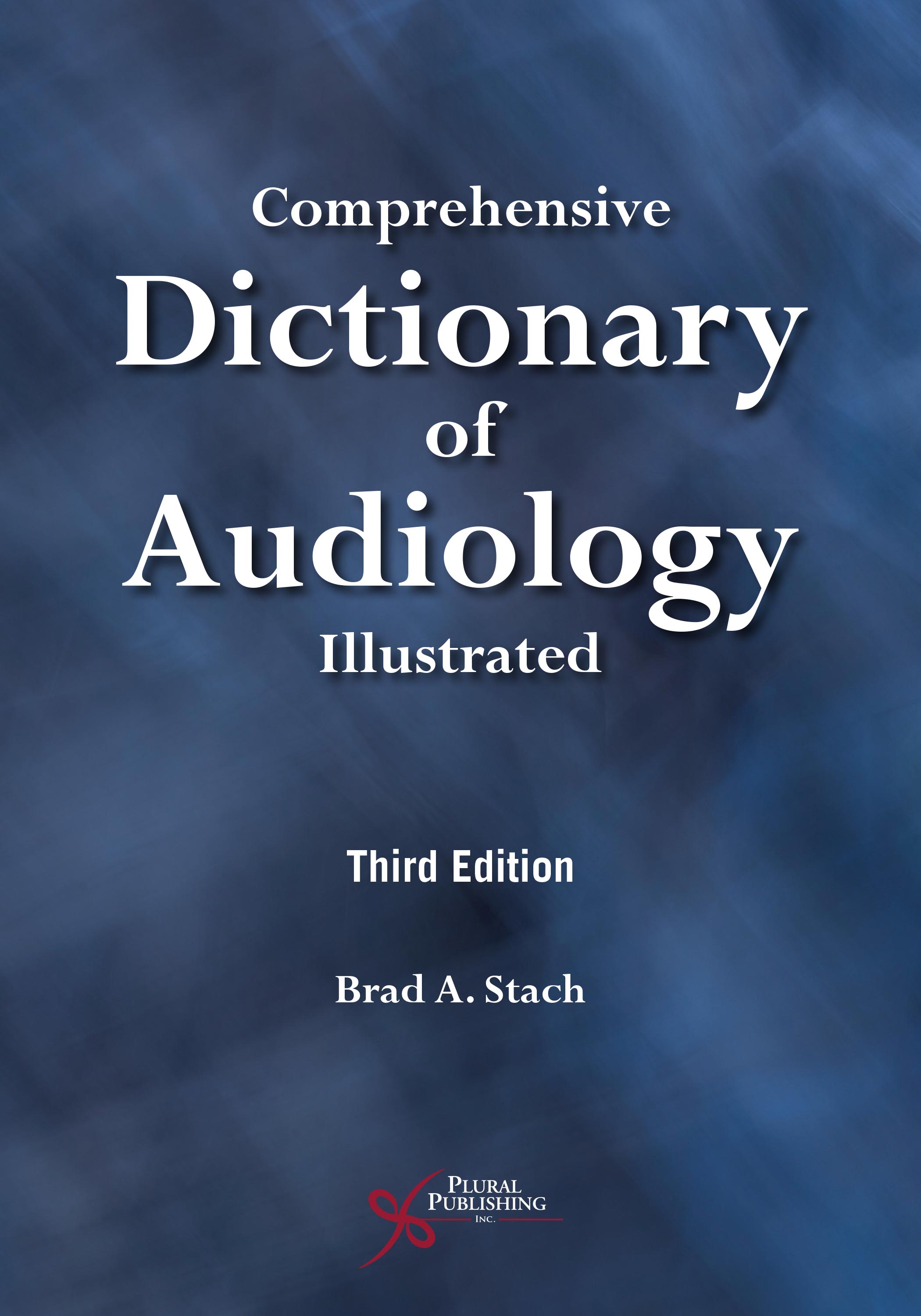
Comprehensive Dictionary of Audiology: Illustrated
Third Edition
Brad A. Stach
Details: 349 pages, B&W, Softcover, 7" x 10"
ISBN13: 978-1-94488-389-8
© 2019 | Available
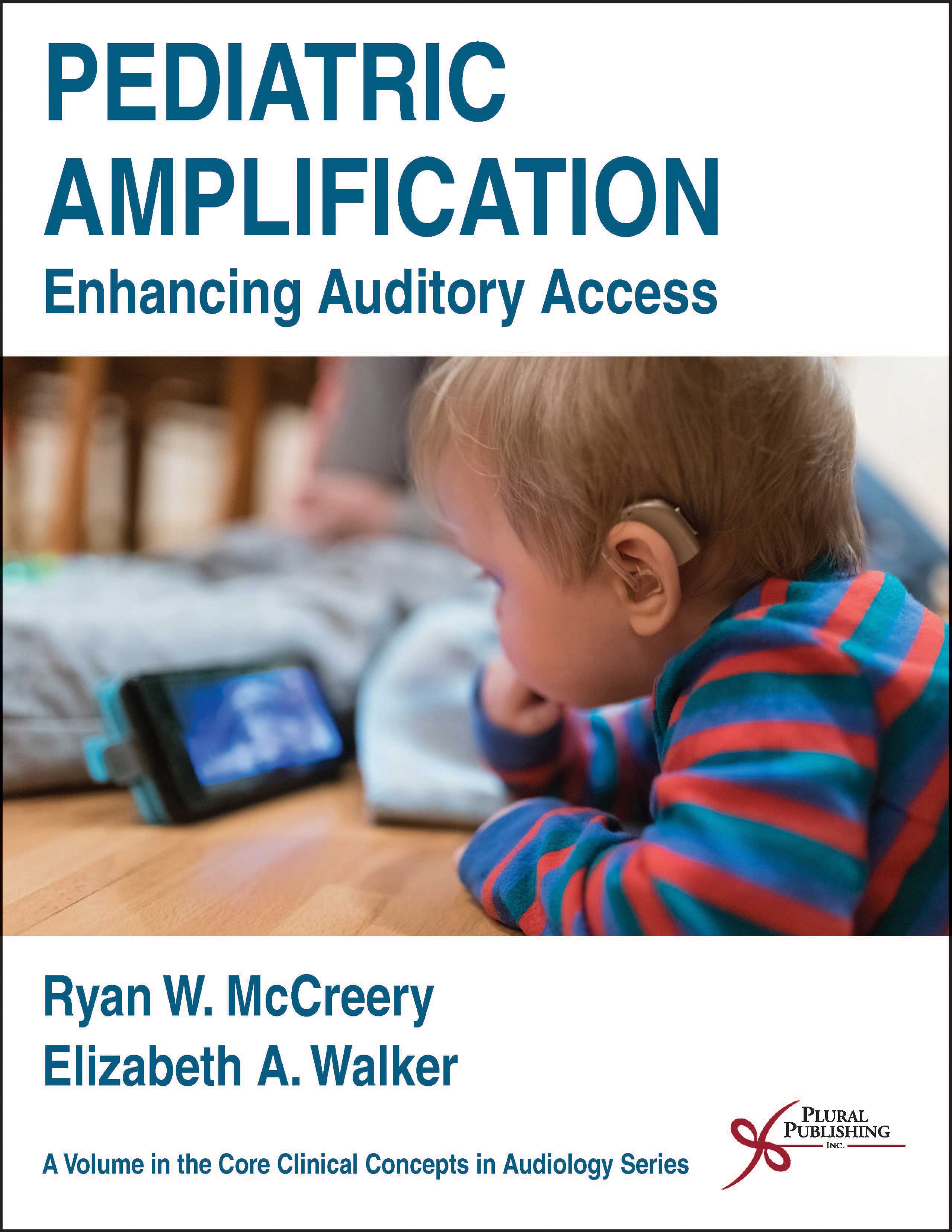
Pediatric Amplification: Enhancing Auditory Access
First Edition
Ryan W. McCreery, Elizabeth A. Walker
Details: 272 pages, B&W, Softcover, 8.5" x 11"
ISBN13: 978-1-59756-992-7
© 2017 | Available
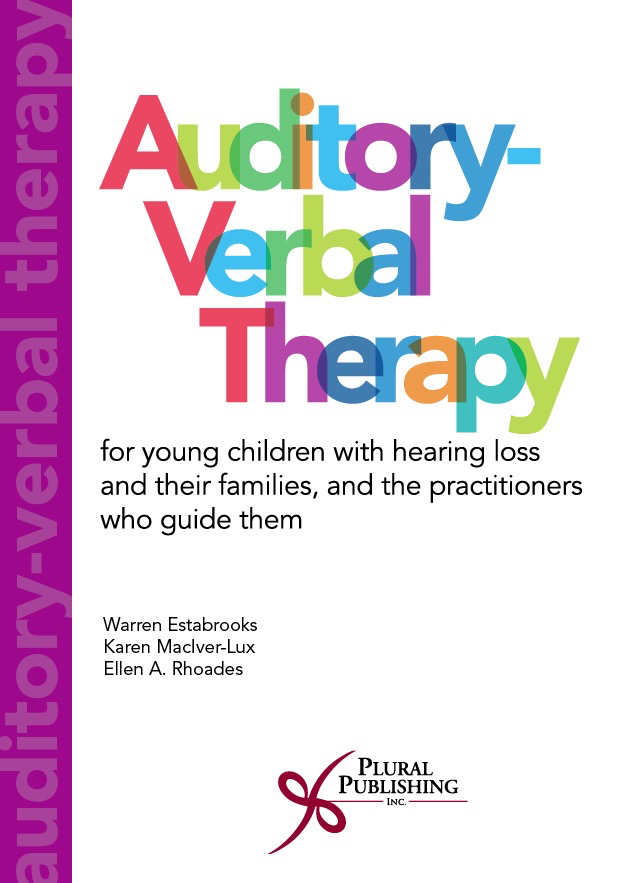
Auditory-Verbal Therapy: For Young Children with Hearing Loss and Their Families, and the Practitioners Who Guide Them
First Edition
Warren Estabrooks, Karen MacIver-Lux, Ellen A. Rhoades
Details: 602 pages, B&W, Hardcover, 7" x 10"
ISBN13: 978-1-59756-888-3
© 2016 | Available
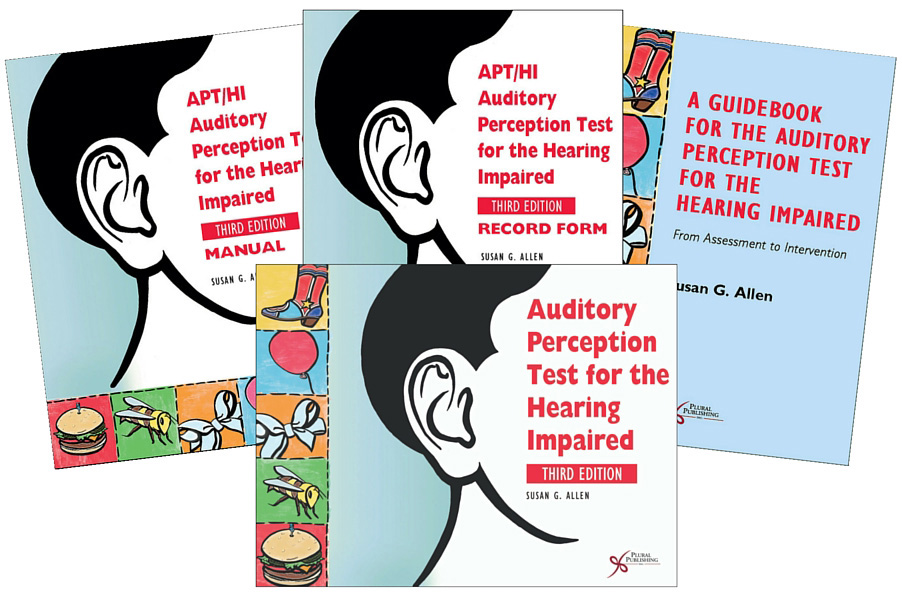
Auditory Perception Test for the Hearing Impaired (APT/HI)
Third Edition
Susan G. Allen
Details: Full Color, Spiral-Bound Test Book, 8.5" x 11", plus Guidebook and Companion website with supplementary materials
ISBN13: 978-1-59756-590-5
© 2016 | Available
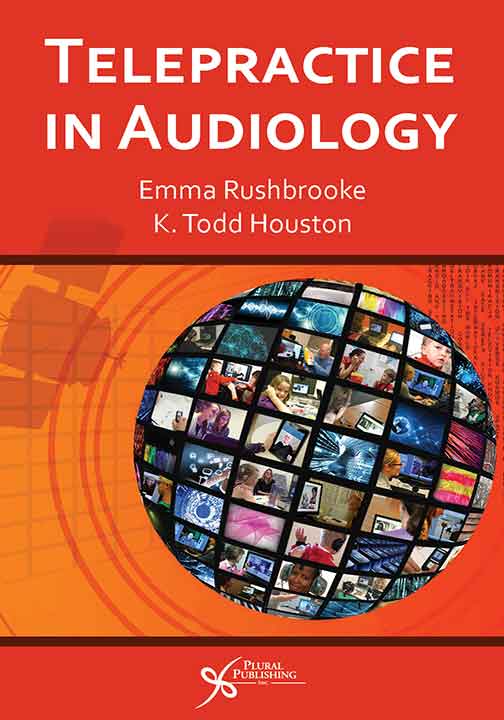
Telepractice in Audiology
First Edition
Emma Rushbrooke, K. Todd Houston
Details: 284 pages, B&W, Softcover, 6" x 9"
ISBN13: 978-1-59756-613-1
© 2016 | Available
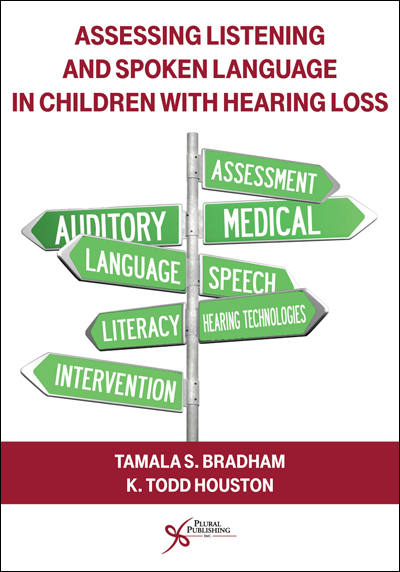
Assessing Listening and Spoken Language in Children with Hearing Loss
First Edition
Tamala S. Bradham, K. Todd Houston
Details: 496 pages, B&W, Softcover, 7" x 10"
ISBN13: 978-1-59756-576-9
© 2015 | Available
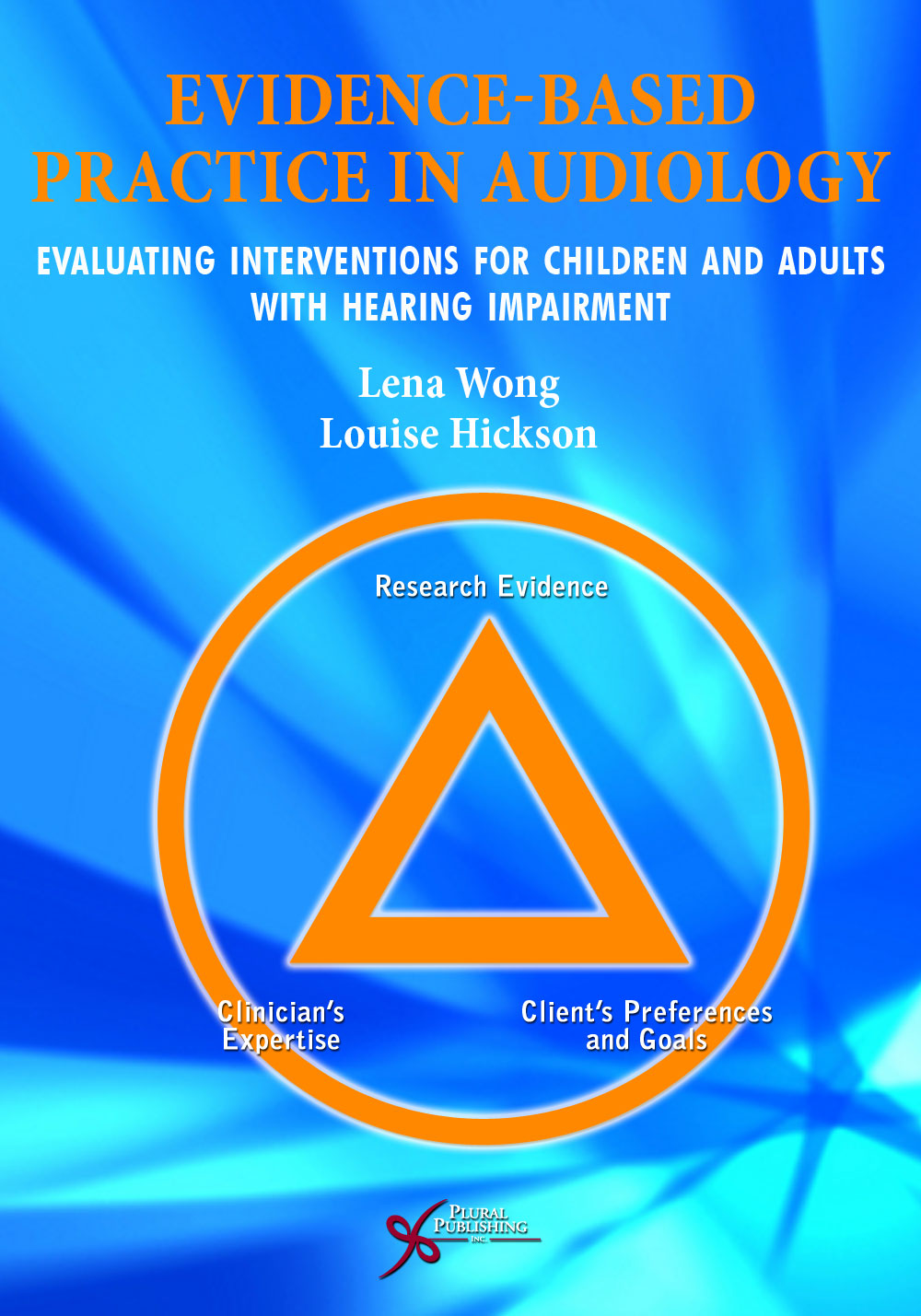
Evidence-Based Practice in Audiology: Evaluating Interventions for Children and Adults with Hearing Impairment
First Edition
Lena Wong, Louise Hickson
Details: 356 pages, B&W, Softcover, 7" x 10"
ISBN13: 978-1-59756-419-9
© 2012 | Available
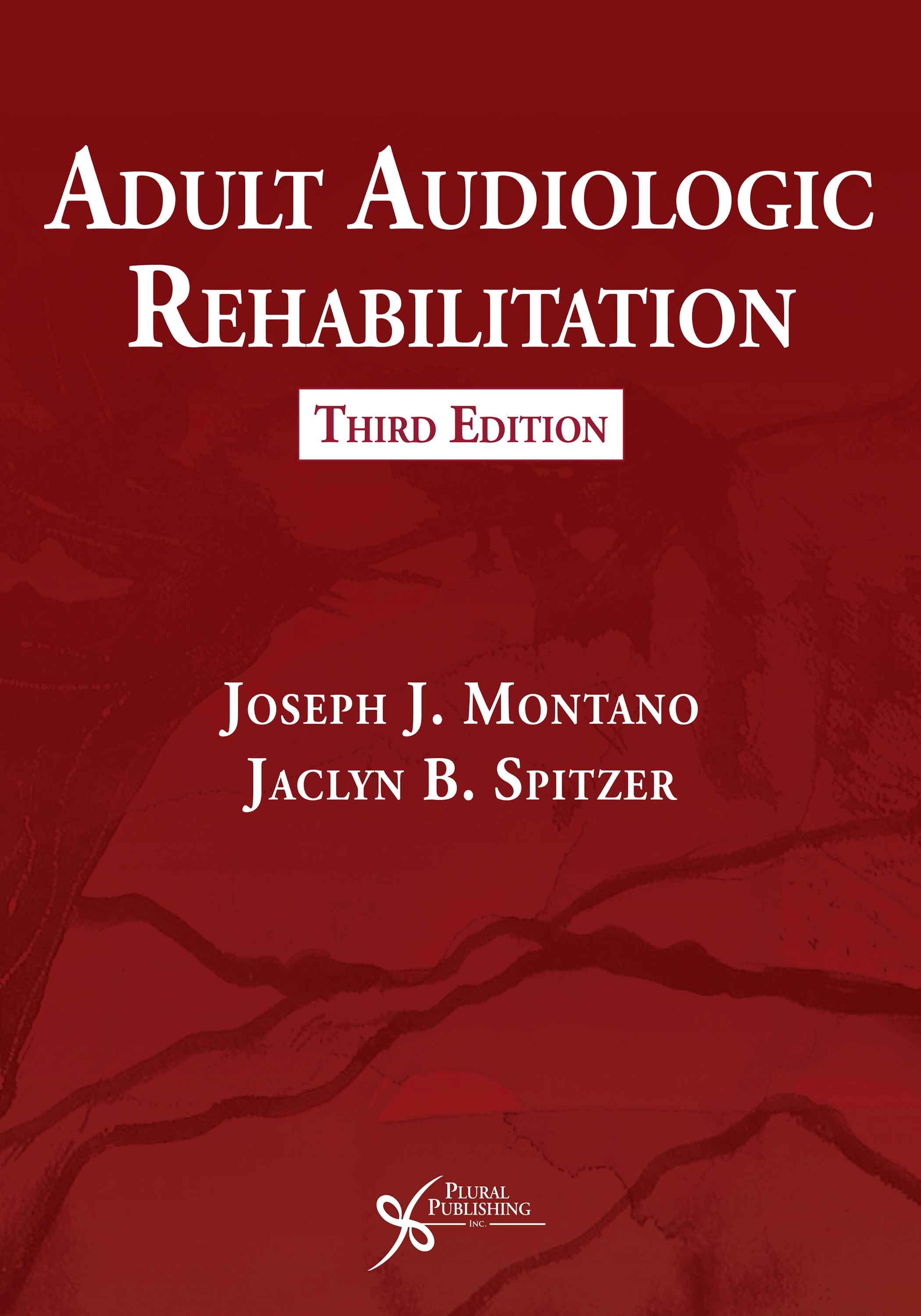
Adult Audiologic Rehabilitation
Third Edition
Joseph J. Montano, Jaclyn B. Spitzer
Details: 610 pages, B&W, Softcover, 8.5"x11"
ISBN13: 978-1-63550-143-8
© 2021 | Available
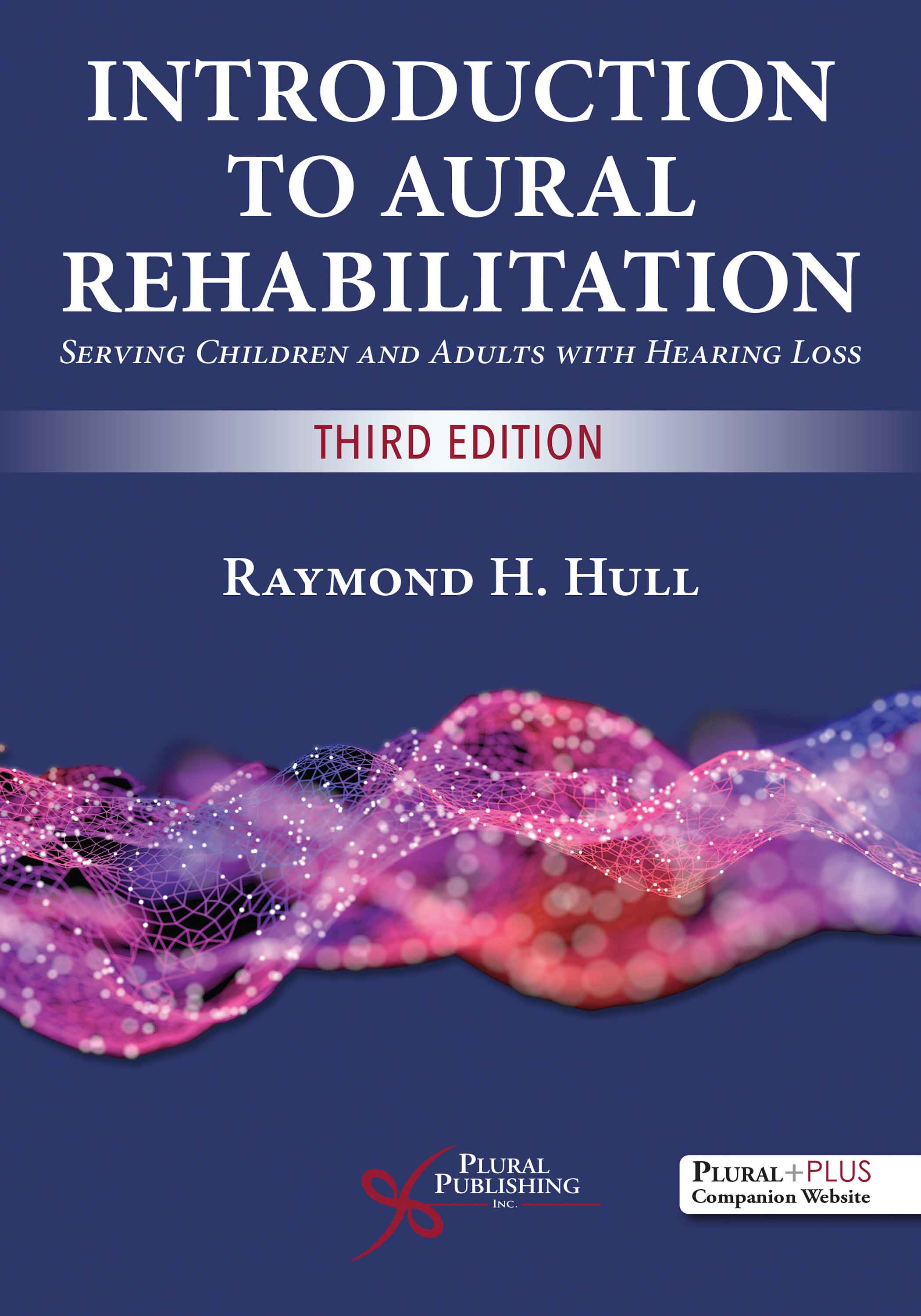
Introduction to Aural Rehabilitation: Serving Children and Adults with Hearing Loss
Third Edition
Raymond H. Hull
Details: 513 pages, 2-Color, Softcover, 7" x 10"
ISBN13: 978-1-63550-114-8
© 2021 | Available
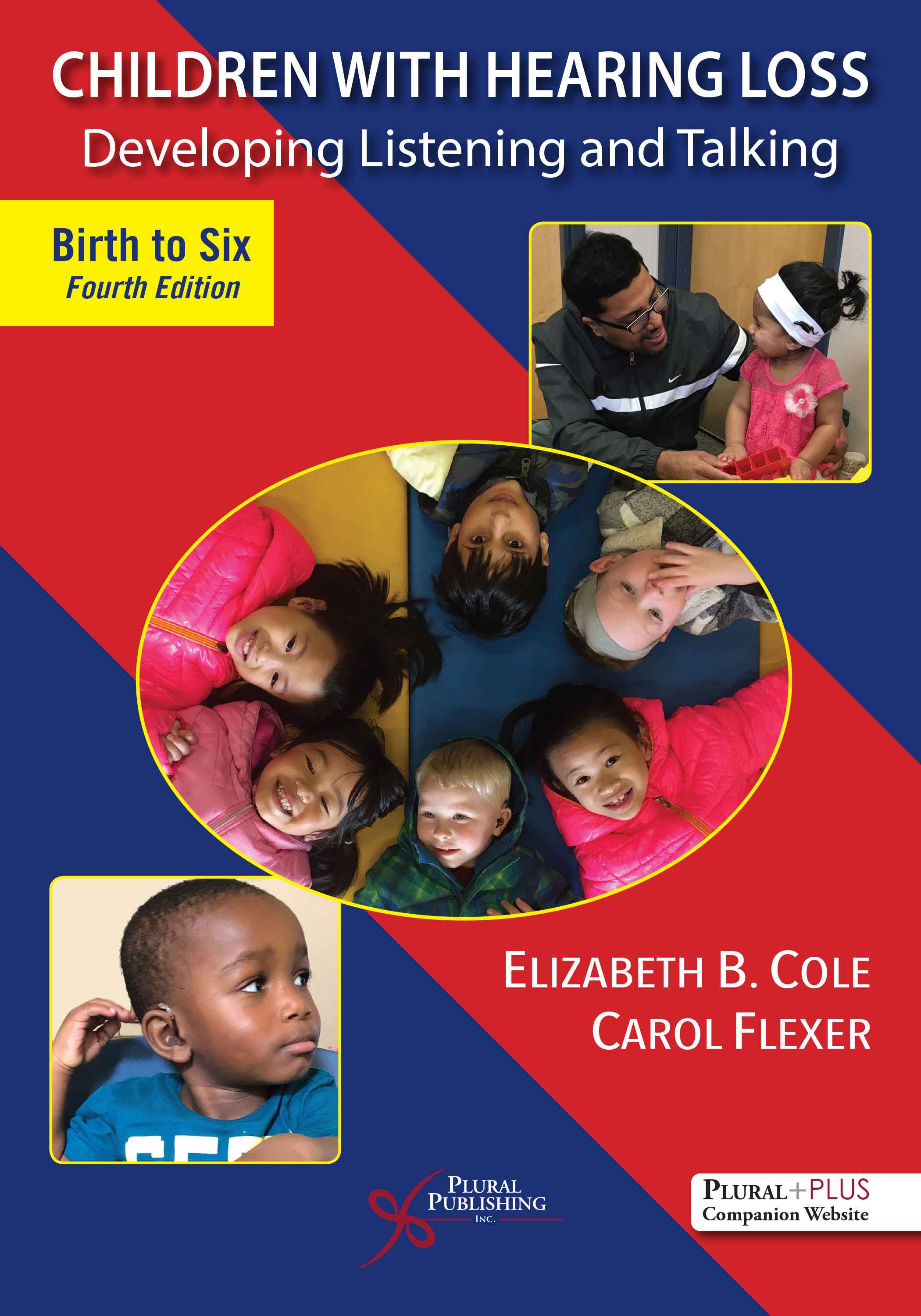
Children with Hearing Loss: Developing Listening and Talking, Birth to Six
Fourth Edition
Elizabeth B. Cole, Carol Flexer
Details: 411 pages, B&W, Softcover, 7" x 10"
ISBN13: 978-1-63550-154-4
© 2020 | Available
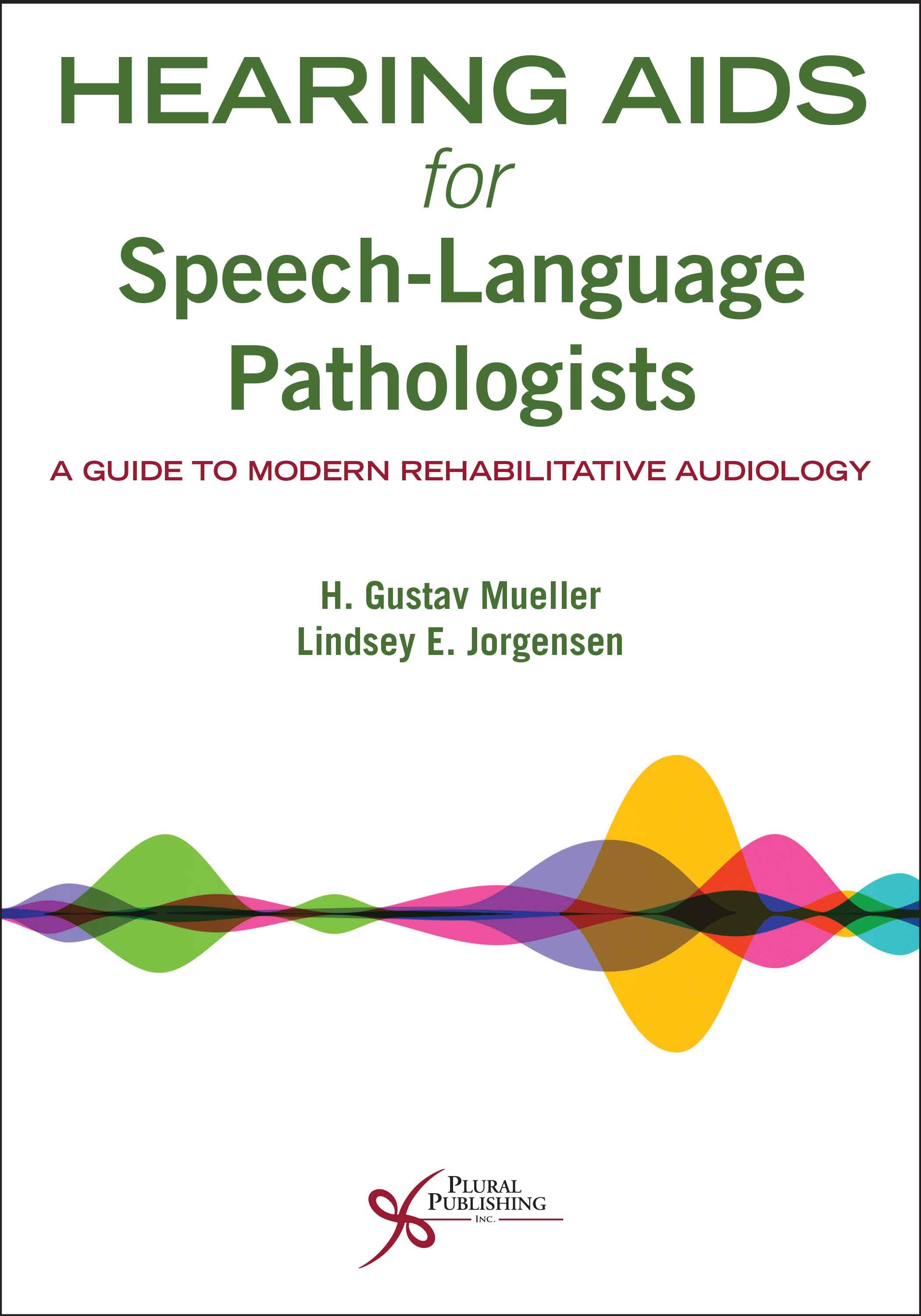
Hearing Aids for Speech-Language Pathologists: A Guide to Modern Rehabilitative Audiology
First Edition
H. Gustav Mueller, Lindsey E. Jorgensen
Details: 445 pages, B&W, Softcover, 7" x 10"
ISBN13: 978-1-63550-214-5
© 2020 | Available
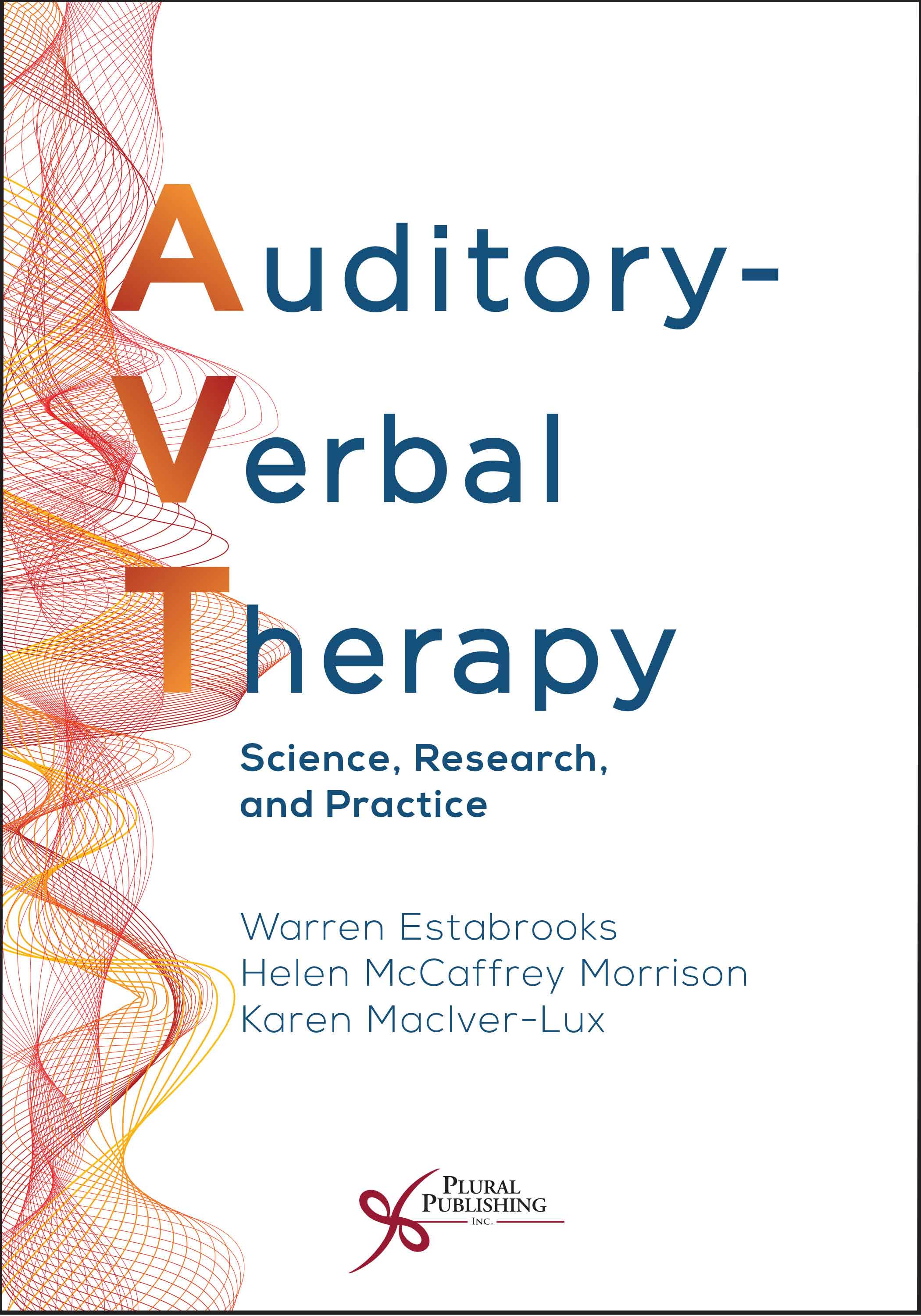
Auditory-Verbal Therapy: Science, Research, and Practice
First Edition
Warren Estabrooks, Helen McCaffrey Morrison, Karen MacIver-Lux
Details: 934 pages, B&W, Hardcover, 7" x 10"
ISBN13: 978-1-63550-174-2
© 2020 | Available
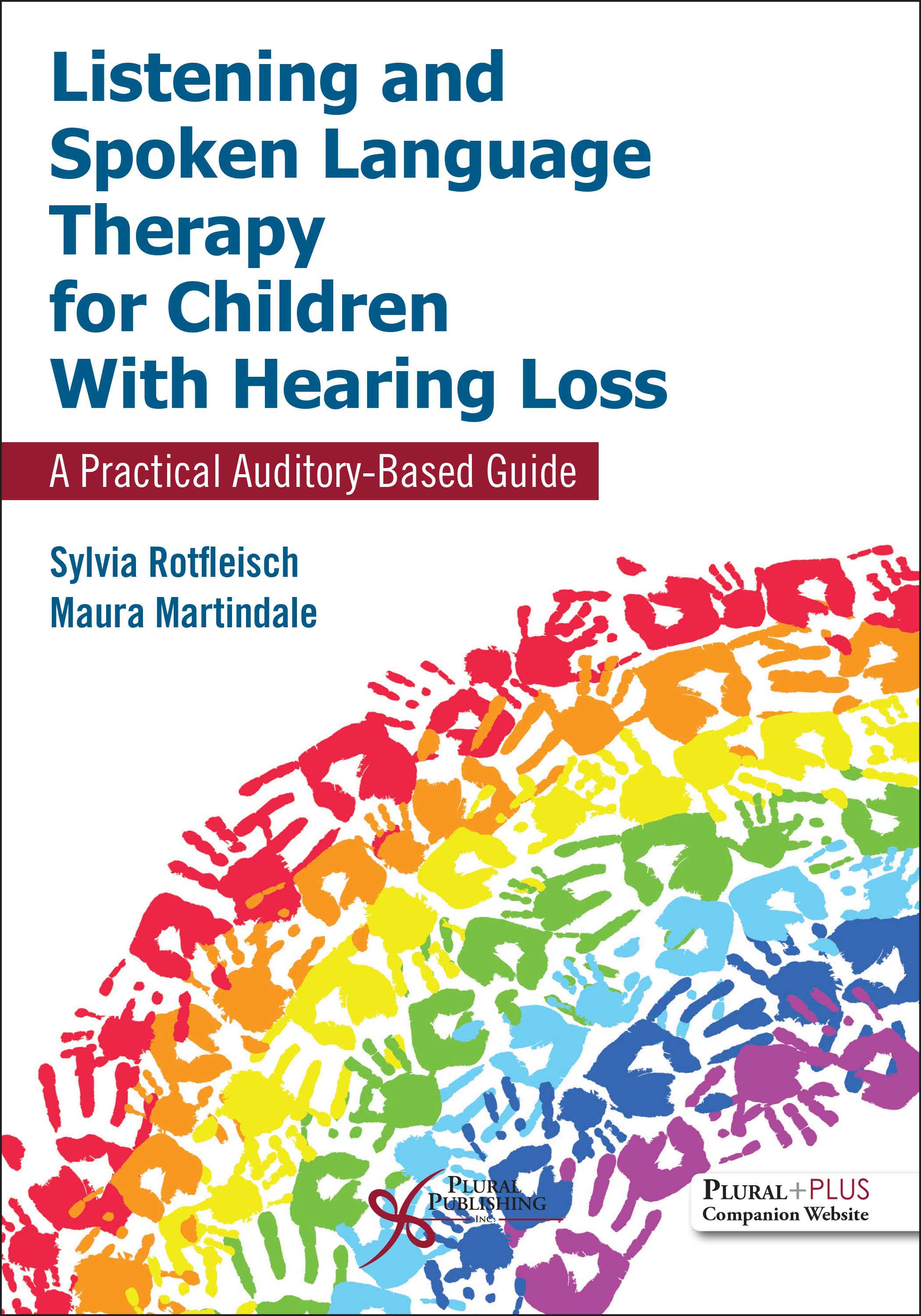
Listening and Spoken Language Therapy for Children With Hearing Loss: A Practical Auditory-Based Guide
First Edition
Sylvia Rotfleisch, Maura Martindale
Details: 310 pages, Full Color, Softcover, 7" x 10"
ISBN13: 978-1-63550-387-6
© 2023 | Available
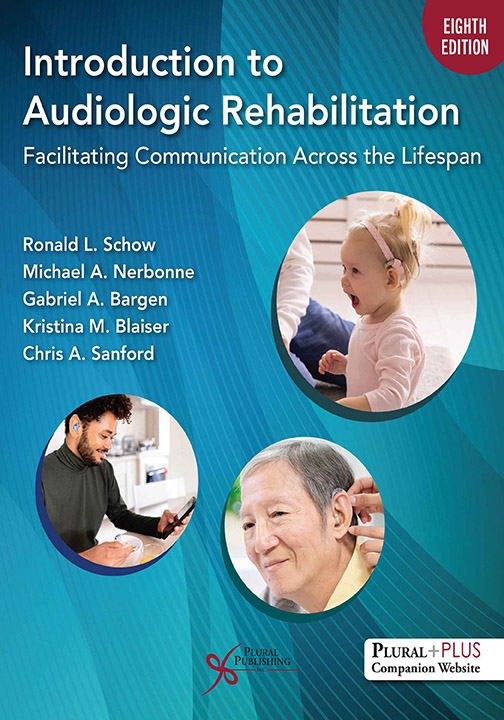
Introduction to Audiologic Rehabilitation: Facilitating Communication Across the Lifespan
Eighth Edition
Ronald L. Schow, Michael A. Nerbonne, Gabriel A. Bargen, Kristina M. Blaiser, Chris A. Sanford
Details: 542 pages, 2-Color, Softcover, 8.5" x 11"
ISBN13: 978-1-63550-755-3
© 2026 | Available
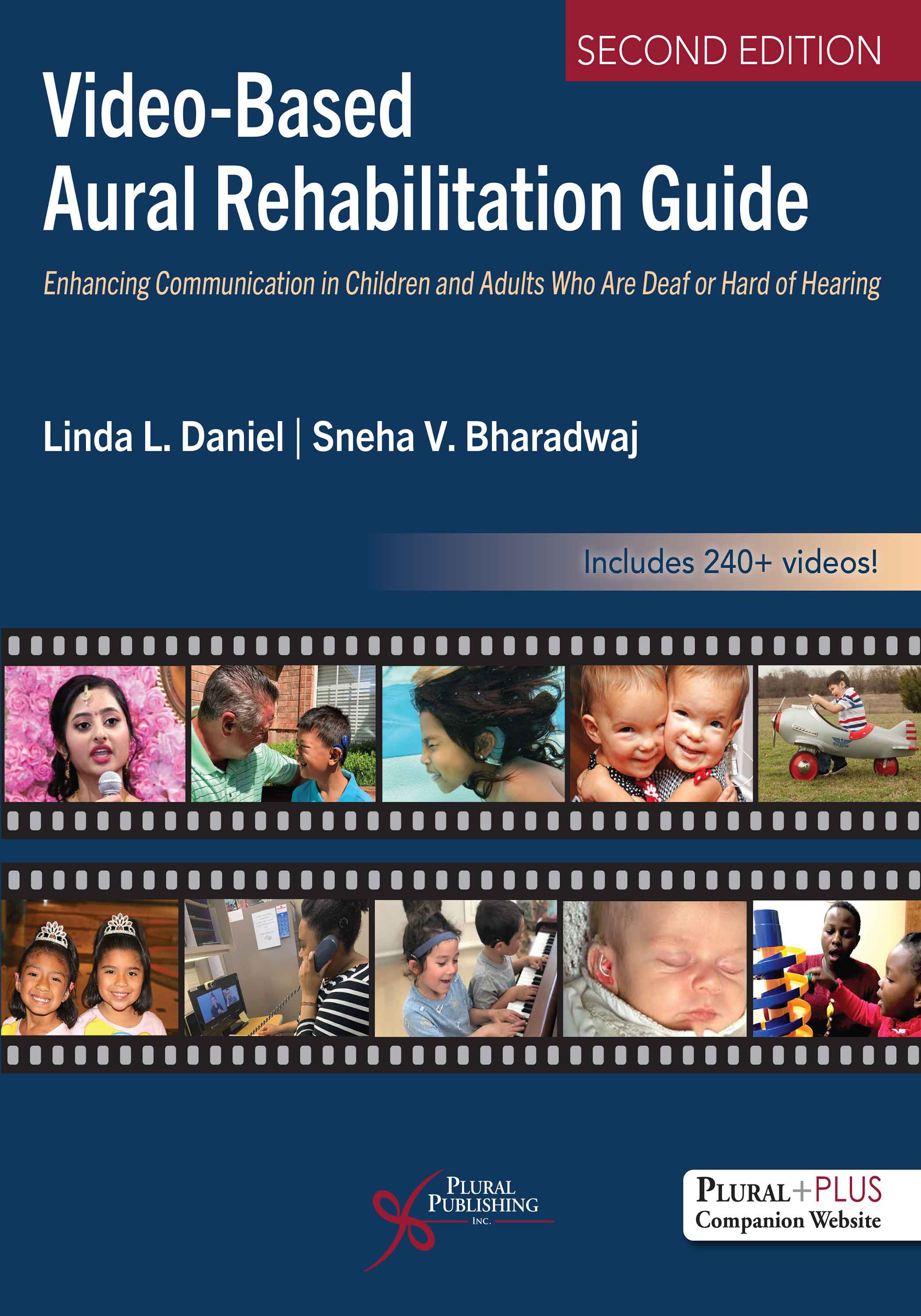
Video-Based Aural Rehabilitation Guide: Enhancing Communication in Children and Adults Who Are Deaf or Hard of Hearing
Second Edition
Linda L. Daniel, Sneha V. Bharadwaj
Details: 426 pages, B&W, Softcover, 8.5" x 11"
ISBN13: 978-1-63550-753-9
© 2026 | Available
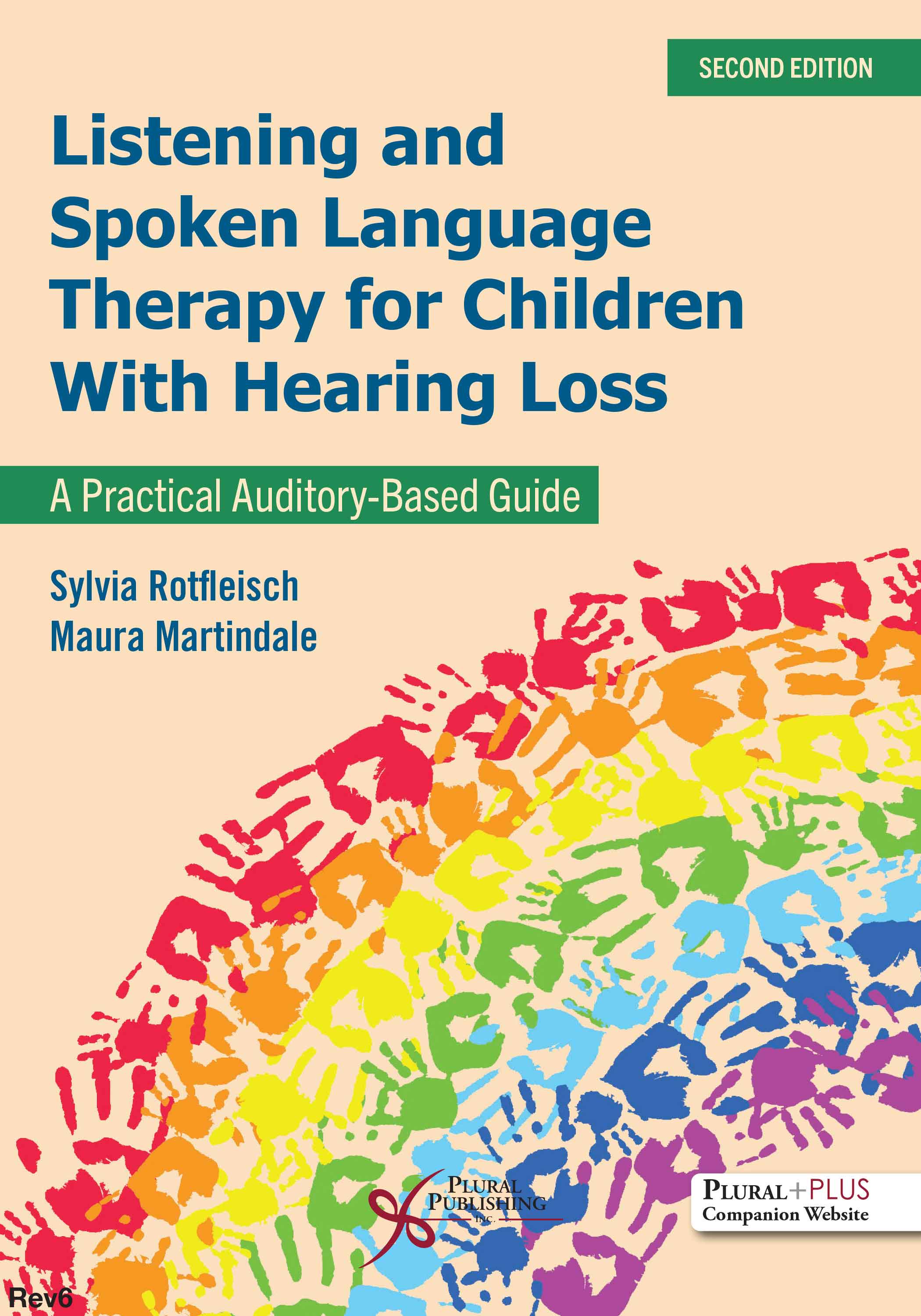
Listening and Spoken Language Therapy for Children With Hearing Loss: A Practical Auditory-Based Guide
Second Edition
Sylvia Rotfleisch, Maura Martindale
Details: 360 pages, Full Color, Softcover, 7" x 10"
ISBN13: 978-1-63550-783-6
© 2028 | Coming Soon
Release Date: 05/01/2026

